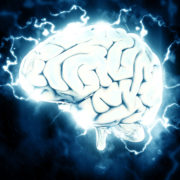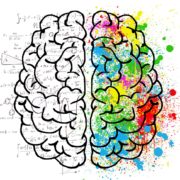ADHD just might be the most misdiagnosed issue of our time
 According to the National Institute of Health, childhood diagnoses of ADHD (Attention Deficit Hyperactivity Disorder) have climbed sharply in the last two decades. The Center for Disease Control and Prevention says that ADHD diagnoses jumped over 40% between 2003 and 2011. In 2016 alone more than 9% of children between the ages of 2 and 17, a total of more than 6 million children, were diagnosed with ADHD.
According to the National Institute of Health, childhood diagnoses of ADHD (Attention Deficit Hyperactivity Disorder) have climbed sharply in the last two decades. The Center for Disease Control and Prevention says that ADHD diagnoses jumped over 40% between 2003 and 2011. In 2016 alone more than 9% of children between the ages of 2 and 17, a total of more than 6 million children, were diagnosed with ADHD.
What is going on here?
According to Leanne O’Neil, owner of INDY Neurofeedback. “Because an anecdotal ADHD diagnosis can include numerous behaviors, many of which just about every child exhibits at one time or another, it becomes very easy to over-diagnose or misdiagnose this in children without the assistance of a qEEG brain map.”
Some of the many symptoms attributed to ADHD include:
- Anger management problems
- Anxiety
- Difficulty staying focused
- Inability to sit still
- Insomnia
- Lack of organizational skills
- Mood swings
- Trouble listening
Doesn’t this sound like many young elementary and middle school-aged children? Absolutely!
How do you know if your child actually has ADHD?
A non-invasive brainwave test. In 2013, the Food and Drug Administration approved the first brainwave test to help diagnose attention deficit hyperactivity disorder (ADHD) in children by measuring brainwaves. Christy Foreman, a director at the FDA, said in a statement that the test will help healthcare providers more accurately determine whether ADHD is the cause of particular behavioral and learning problems.
Brainwave testing has been used by many healthcare providers all over the world for the past 30 years. In addition to identifying ADHD, brainwave testing also provides the basis for neurofeedback training which is used to help alleviate many of the symptoms associated with ADHD.
Leanne O’Neil, owner of INDY Neurofeedback states that, “The brainwave test identifies unbalanced brainwave patterns that may be related to focus and attention issues and neurofeedback retrains the brain’s ability to self-regulate. Talk to us if your child’s teacher is discussing ADHD diagnosis,” says Leanne O’Neil. “We can help you better understand what is actually going on and work with your individual needs.
The conventional solution to ADHD is usually medication, and likely prescribed long-term. But all medications have side effects, which can be particularly problematic with your child’s developing brain.
“This doesn’t mean that medication is always a poor choice,” continues O’Neil. “It just means that it’s important to explore all of your options before jumping into a long-term regimen.”
Many parents have had success addressing their child’s hyperactivity by discovering and addressing food intolerances and nutrient deficiencies.
Food for thought: Your child eats a breakfast that has no fat, little protein and a high glycemic index – let’s say a bagel with fat-free cream cheese. Blood sugar goes up, but then soon crashes, which triggers the release of stress hormones like adrenaline. At around 10am, this child is jittery and fidgety and cannot pay attention. This can look like ADHD to a teacher.
If diet modifications fail, call us! We can identify underlying problems that factor into your child’s behavior and help come up with a plan of care, often one that works without the aid of prescription drugs.










